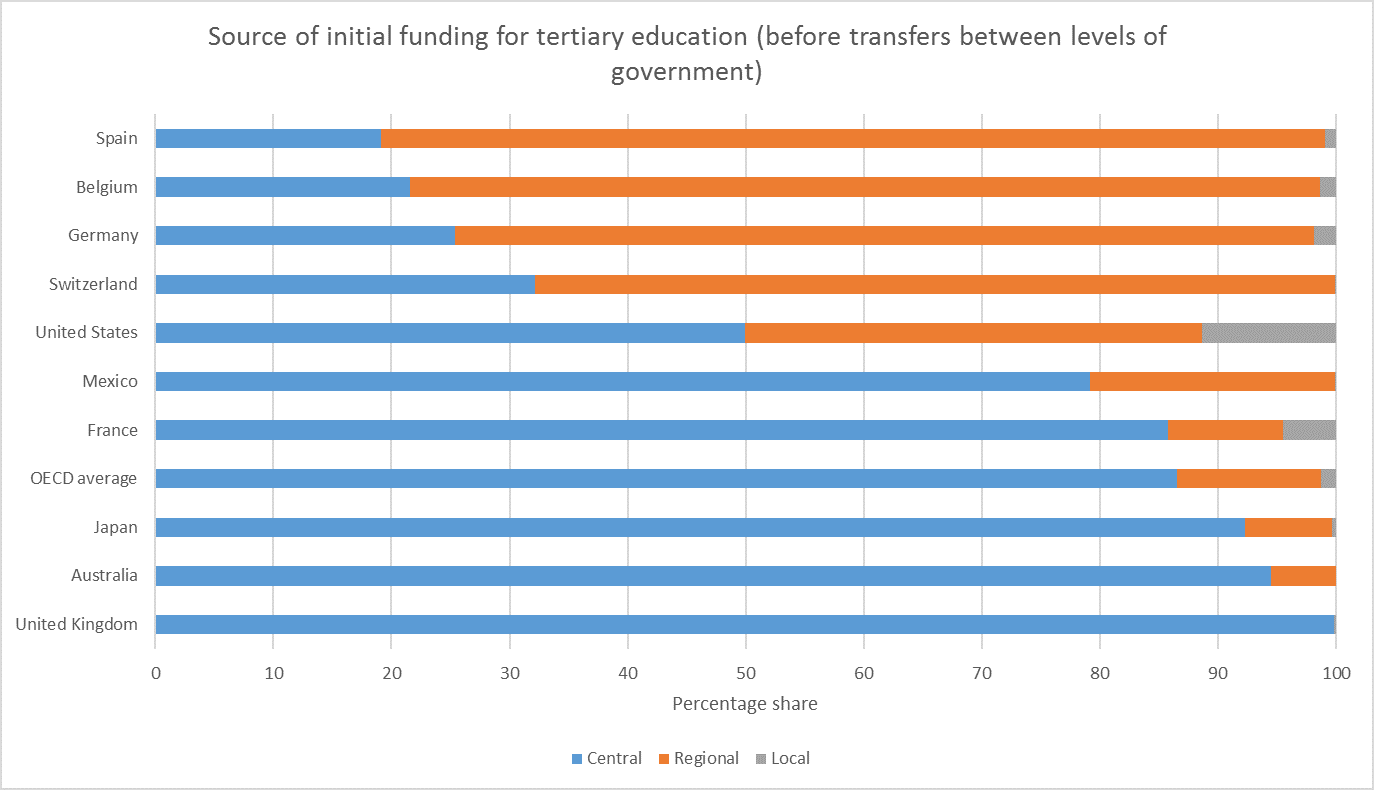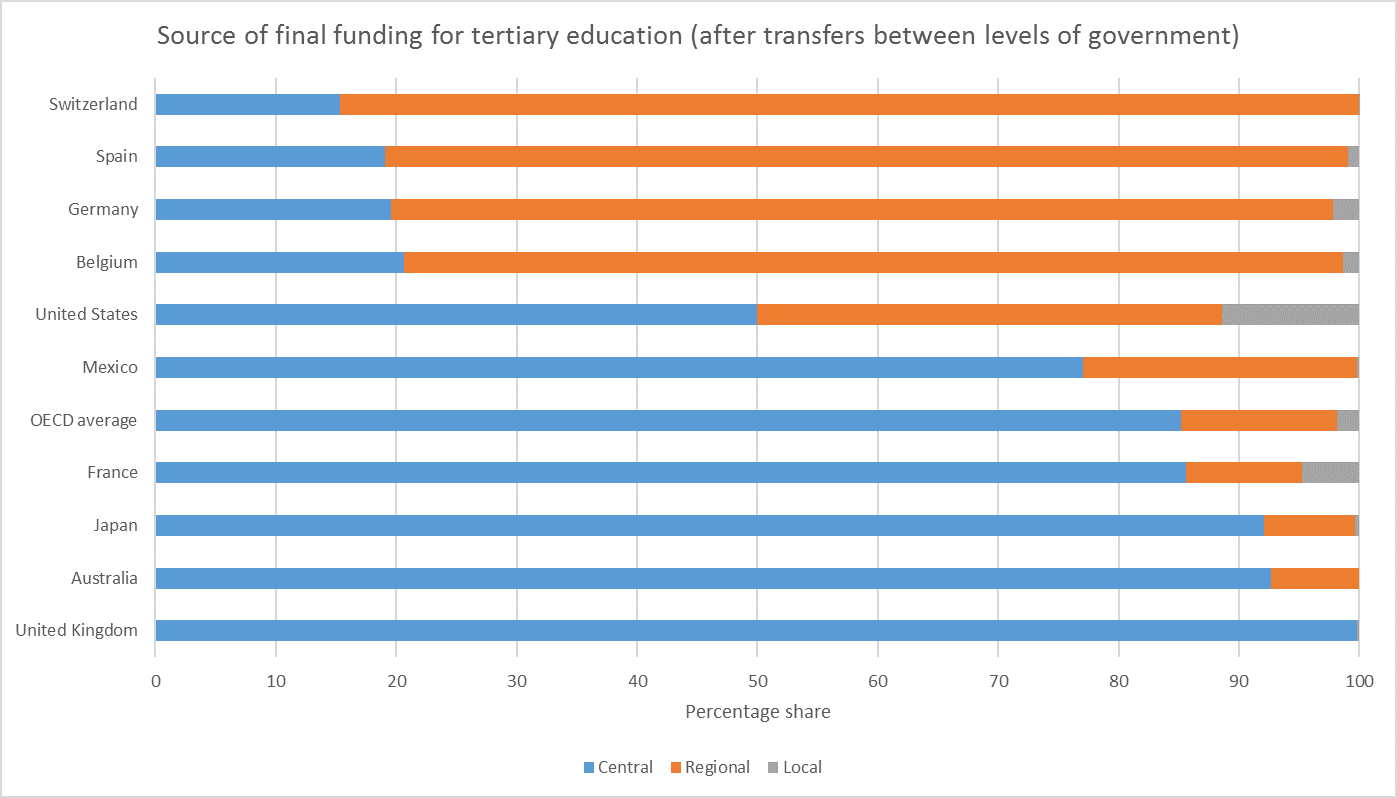The source of funding for higher education is a subject never far from the headlines, with debates about how much students should contribute often being the main sticking point.
However, another aspect of funding that is not considered quite as regularly is how much investment comes from central government as opposed to regional or local government.
According to the Organisation for Economic Cooperation and Development’s latest Education at a Glance report, funding for tertiary education is on the whole much more centralised than for schools.
In 2014, on average across OECD countries, 55 per cent of the initial public funds for primary, secondary and post-secondary non-tertiary education came from a nation’s central government. This compares with 87 per cent for tertiary education.
Funding is even more decentralised for schools and colleges after allowing for the transfer of funding between different levels of government, for instance once a central government has given public funding to a local authority to distribute.
After allowing for this transfer of public money, the percentage of schools funding that comes from central government falls to an OECD average of 42 per cent. However, for tertiary education, this transfer of funding only causes the share from central governments to fall to 85 per cent.
In fact, higher education funding is so centralised across the OECD that “in 17 countries, central government is the only source of initial funding for tertiary education” and in all but two of those countries “there are no transfers to regional or local governments”, the report says.
The UK is among those with a completely centralised system of funding for higher education. However, there are still examples of countries that have chosen to fund their universities and other tertiary education institutions in a much more decentralised way.
Some European countries stand out: for instance, 80 per cent of the initial public funding for tertiary education in Spain comes from regional governments – a prescient fact given the current political crisis in Catalonia.
Other European countries with similar funding profiles are unsurprisingly those with strong regional identities: Belgium and Switzerland, with their distinct linguistic communities, and Germany, where the Länder have a fundamental role in deciding policy, have more than two-thirds of higher education funding coming initially from regional government.

The US is the other country with major decentralisation of funding, reflecting the role of individual states in public university systems.
Looking at the picture once public funding is transferred between different layers of government, the countries with the most decentralisation remain the same but, notably, in Switzerland even more money is channelled finally at a regional level.

Meanwhile, the most local layers of government do not tend to account for much of the funding for universities, unlike in schools. “Public funds from local sources represent, on average across OECD countries, less than 3 per cent of the funds before and after transfers,” the report says.
“The only exceptions are Finland, Ireland and the US, where local governments fund over 10 per cent of tertiary education after transfers.”
Find out more about THE DataPoints
THE DataPoints is designed with the forward-looking and growth-minded institution in view
Register to continue
Why register?
- Registration is free and only takes a moment
- Once registered, you can read 3 articles a month
- Sign up for our newsletter
Subscribe
Or subscribe for unlimited access to:
- Unlimited access to news, views, insights & reviews
- Digital editions
- Digital access to THE’s university and college rankings analysis
Already registered or a current subscriber?


